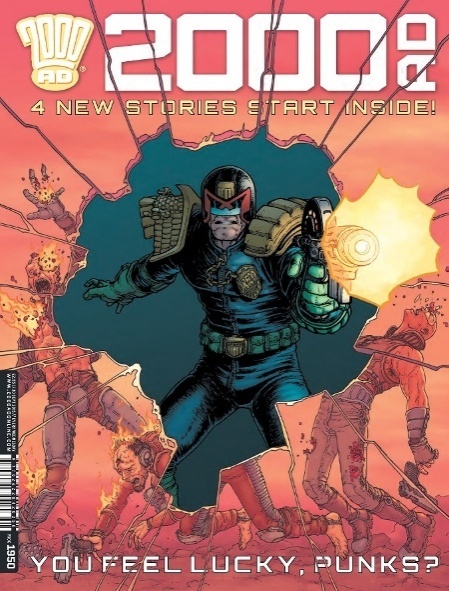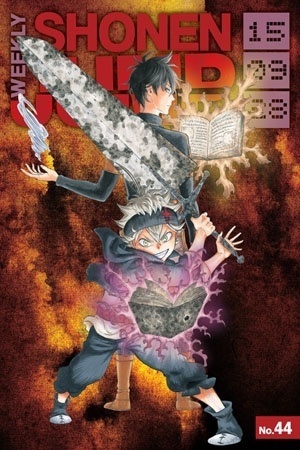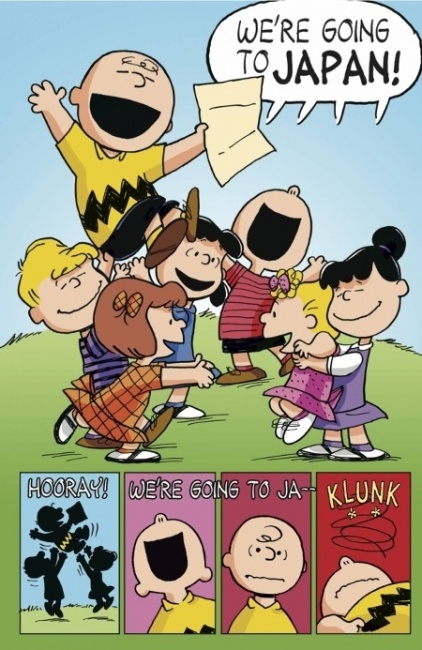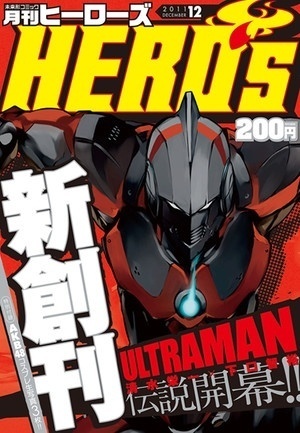Confessions of a Comic Book Guy is a weekly column by Steve Bennett of Super-Fly Comics and Games in Yellow Springs, Ohio. This week Bennett reviews weekly comics, including two of the biggest from other countries.
For a while now I’ve been wanting to write about weekly comics (not the American ones, and I know that there are some), the ones from overseas which (to my mind) are a better reflection of what a weekly comic book should be. That being an anthology with several different stories featuring different characters or genres. I realize that most likely we’ll never see that kind of weekly comic book in America, but even more impossible-seeming things have happened, so who really knows?
Here’s a confession: while I love British comics, 2000AD has never really done it for me. Which is admittedly kind of odd seeing how some of my favorite British comics (Halo Jones, D.R. & Quinch, Zenith, etc.) were originally published there. It’s probably because I like my science fiction optimistic and they were overly infatuated with dismal dystopias, the same way I liked heroes and they preferred sociopathic anti-heroes. For me a little of that sort of thing goes a long way and in 2000AD that’s all you got; no matter how good or bad the stories, they were almost always the exact same formula of over the top violence and acidic satire. It’s a template that I’ve impishly come to call Johnny Bastard and His All-Bastard Squad on Planet Bastard.
But I like the idea of a weekly science fiction comic enough to still check in on it every couple of years to see if it’s any more to my liking, which I did earlier this year. And I’m happy to report I like this 2000AD a lot more. Most of the features I knew were gone, though it was still anchored by Dredd of course and the Tharg’s Future Shocks one-offs were still there, but otherwise the features were all unknown quantities. At the moment, they’re pretty evenly divided between SF (Grey Area, Outlier) and the supernatural (Absalom, The Alienist), all of which I found to be sophisticated and well done. But the real highlight was Helium by Ian Edginton and D’Israeli, about a constable and her cyborg partner operating in a steampunk-like future; it’s unique from concept to the color scheme.
My favorite weekly comic undoubtedly is Shonen Jump. The teenager who was desperately waiting for manga to make it America still finds it hard to believe there’s a US edition of the magazine. And copies are still only 99 cents for several hundred pages of top-notch manga. At this price, you can afford to not love every feature, which is definitely the case for me. Like, I like to think I have a pretty healthy suspension of disbelief, but I couldn’t accept delivery of the premise of Gakkyu Hotei: School Judgment (worldwide bullying epidemic leads Japan to create "school courts" run by grade schoolers) even as metaphor or satire. And maybe foodies will be able to get into Toriko about a "Gourmet Hunter," someone that searches a wild and weird fantasy land for rare ingredients. But I found it to be, and this is hard to admit, just too weird for me to get into.
A lot of different genres are represented here, and they’re not all in every issue so you also get a lot of variety out of this anthology. Currently the genre getting the most pages per issue is probably the supernatural (Seraph of the End, Blue Trigger, Black Clover, Beach) but there’s also science fiction (World Trigger) and even romance (Nisekoi). Not to mention such brand name manga like One Piece and Yu Gi Oh Zexal. My favorites, though, are the stories I wouldn’t find anywhere else. Such as Food Wars, about a young cook from a small family restaurant who’s sent to a fancy culinary school. Having worked in kitchens, I can admire the research creators Yuto Tsukuda and Shun Saeki must have done into the workings of restaurants because their story sure seems convincing to me.
They've even got superheroes. To once again demonstrate my obliviousness, I would never have thought there would be that much of an appetite for American-style superheroes in Japan. But then, I never would have thought that the 65-year-old-in-October American comic strip Peanuts could possibly be "Big In Japan." I'm Facebook friends with Paige Braddock, creator of the comic strip Jane’s World, the kids book Stinky Cecil and Creator Director at Charles M. Schulz Creative Associates. One day she posted a video link showing her being interviewed by a Japanese news team concerning the upcoming Peanuts movie and frankly, it kind of blew my mind.
I’ve proven my Peanuts bona fides, having previously confessed that I actually owned a made-by-his-mother Snoopy suit back when I was a kid (see "Confessions of a Comic Book Guy--This Is Who He Is" for the whole humiliating story), but this, this I did not know. Of course, I should have. One hint being the 2012 graphic novel Peanuts: It’s Tokyo Charlie Brown which began life when a Japanese publisher wanted to do a manga featuring the Peanuts characters. And in March 2016 the Snoopy Museum Tokyo will be opening in Roppongi, Tokyo, the first outside of the U.S. dedicated to the art of Charles Schulz. And according to a recent piece on the RocketNews24 website you’ll be able to "Dine with Snoopy and pals at the new Peanuts-themed cafe opening in Tokyo soon!"
But getting back to superheroes in Japan, I was aware that the recently published Ultraman manga was in part influenced by Frank Miller's The Dark Knight (along with other American comics); it’s pretty obvious. But what I didn't know was that the manga has originally been published in Hero's Magazine, a monthly manga title totally devoted to Japanese superheroes. Now I've read, reviewed (see "Review: 'Ultraman' Vol. 1 TP") and liked it, especially the way its creators looked at standard superhero tropes through the prism of the everyday life of Japanese salarymen and high school students.
And currently running in Shonen Jump there are two features with superheroes. My Hero Academia deals with a novice superpowered teen and his struggles at a superhero training academy (which seems, not surprisingly, a whole lot like a Japanese high school), while One Punch Man focuses on an incredibly powerful hero who wants to fight evil, putting him at odds with all the other superheroes who are obsessed with position, ranking and status. The creator’s take on the genre is that being a superhero is a job and a fairly crappy one at that. So I’m going to go out on a limb and assume the strict hierarchy in the superhero world is a reflection of the Japanese workplace.
And, at long last finally, I’ve repeatedly written about The Phoenix, the wonderfully British weekly comic intended for kids. For a couple of years a digital subscription was available via the iTunes store but without any warning there was a brief announcement that this was going to stop. I’m going to sincerely miss reading it every week, but here’s hoping this means that The Phoenix will be soon be available via comiXology.
The opinions expressed in this column are solely those of the writer, and do not necessarily reflect the views of the editorial staff of ICv2.com.
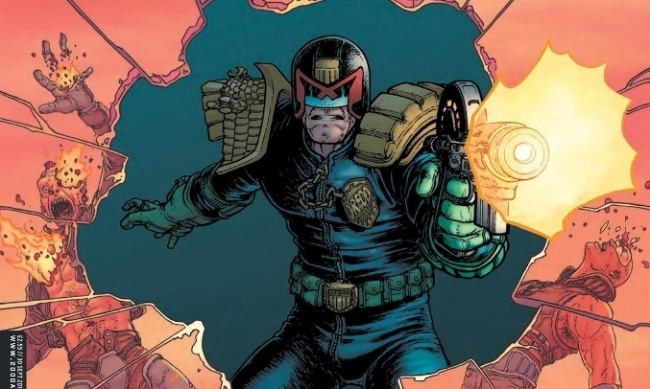
Column by Steve Bennett
Posted by Steve Bennett on September 30, 2015 @ 2:14 am CT



